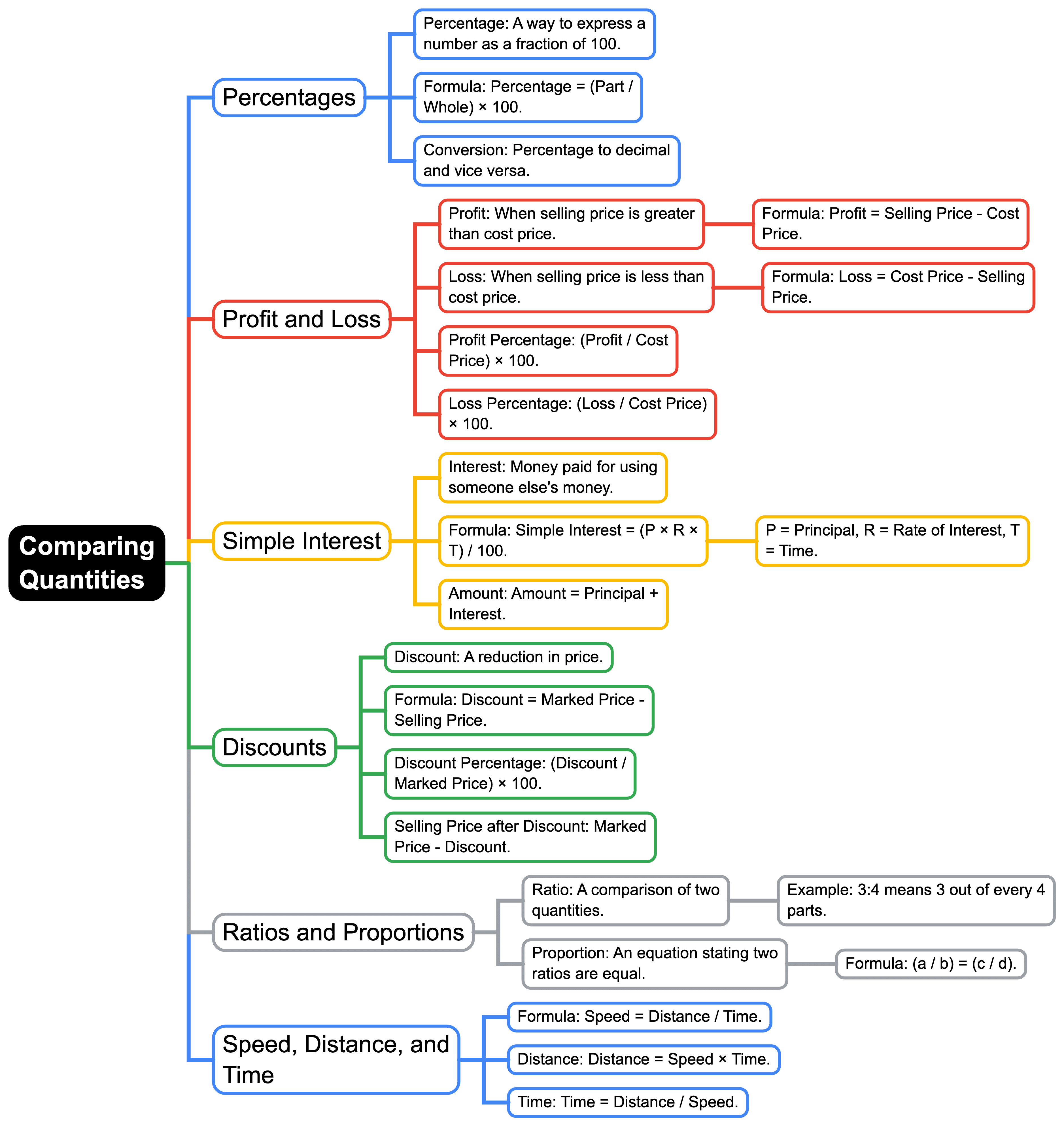Class 7 Exam > Class 7 Notes > Mathematics (Maths) Class 7 (Old NCERT) > Mind Map- Comparing Quantities
Mind Map- Comparing Quantities | Mathematics (Maths) Class 7 (Old NCERT) PDF Download

The document Mind Map- Comparing Quantities | Mathematics (Maths) Class 7 (Old NCERT) is a part of the Class 7 Course Mathematics (Maths) Class 7 (Old NCERT).
All you need of Class 7 at this link: Class 7
|
78 videos|457 docs|39 tests
|
FAQs on Mind Map- Comparing Quantities - Mathematics (Maths) Class 7 (Old NCERT)
| 1. What are the basic concepts of comparing quantities in Class 7? |  |
Ans. In Class 7, comparing quantities involves understanding ratios, proportions, percentages, and their applications. Students learn how to express one quantity in terms of another, compare different quantities, and solve real-life problems using these concepts.
| 2. How do you calculate the ratio of two quantities? |  |
Ans. To calculate the ratio of two quantities, you divide one quantity by the other. For example, if you have 10 apples and 5 oranges, the ratio of apples to oranges is 10:5, which can be simplified to 2:1 by dividing both numbers by 5.
| 3. What is the significance of percentages in comparing quantities? |  |
Ans. Percentages are essential in comparing quantities because they provide a standardized way to express a quantity as a fraction of 100. This helps in understanding how one quantity relates to another, making it easier to compare values, such as discounts, profits, or population growth.
| 4. Can you explain the difference between direct and inverse proportion? |  |
Ans. Direct proportion occurs when two quantities increase or decrease together, meaning if one quantity doubles, the other also doubles. Inverse proportion, on the other hand, happens when one quantity increases while the other decreases. For example, if you have a fixed amount of work done, increasing the number of workers will decrease the time taken to complete the work.
| 5. How can comparing quantities be applied in real-life situations? |  |
Ans. Comparing quantities can be applied in various real-life situations, such as calculating discounts while shopping, determining the best deals, comparing prices, analyzing statistics in sports, or assessing financial budgets. Understanding these comparisons helps in making informed decisions.
Related Searches
















